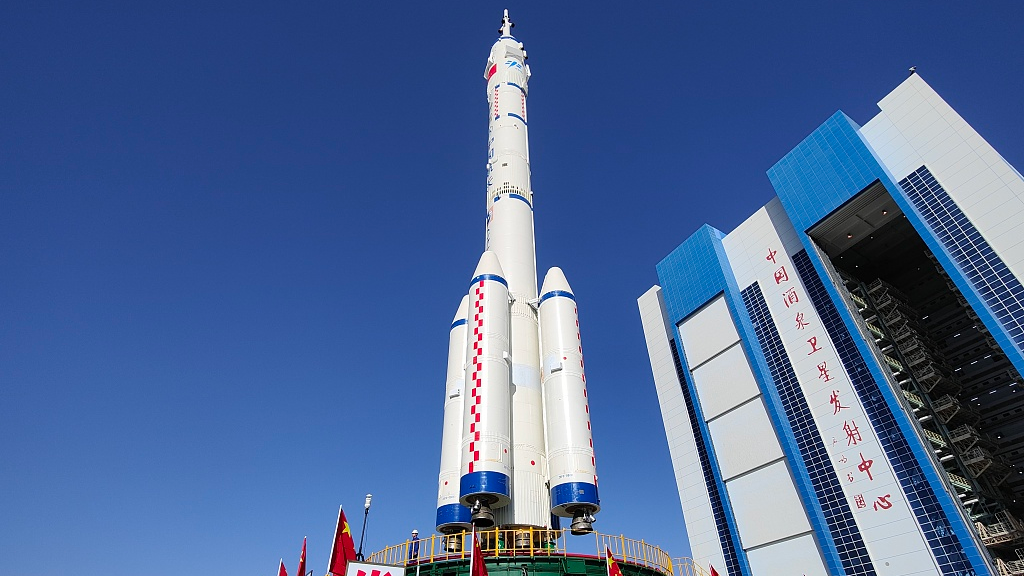
China's crewed spaceship Shenzhou-14 atop a Long March-2F carrier rocket is transferred to the launchpad at the Jiuquan Satellite Launch Center in northwest China, May 29, 2022. /CMSEO
China's crewed spaceship Shenzhou-14 atop a Long March-2F carrier rocket is transferred to the launchpad at the Jiuquan Satellite Launch Center in northwest China, May 29, 2022. /CMSEO
The Long March-2F rocket, China's only rocket to carry out manned missions, which will be used to launch the Shenzhou-14 spacecraft to China's space station, has been well-equipped with escape and failure detection systems to ensure its safety and reliability for the coming mission, said Liu Feng, the rocket's deputy chief designer.
The combo of Shenzhou-14 spaceship and Long March-2F carrier rocket was vertically transferred to the launchpad at the Jiuquan Satellite Launch Center in northwest China on Sunday, according to the China Manned Space Engineering Office (CMSEO).
The Shenzhou-14 crewed spacecraft will send three astronauts to the Tianhe core module of China's space station in June for a six-month mission, said Huang Weifen, the chief designer of the astronaut system for China's manned space project, at a press conference on April 17.
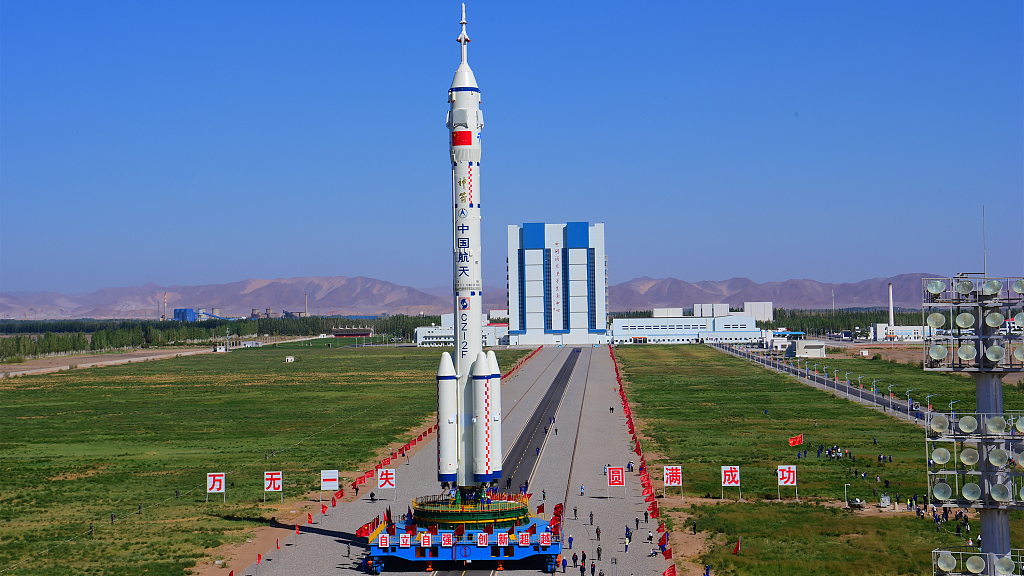
China's crewed spaceship Shenzhou-14 atop a Long March-2F carrier rocket is transferred to the launchpad at the Jiuquan Satellite Launch Center in northwest China, May 29, 2022. /CMSEO
China's crewed spaceship Shenzhou-14 atop a Long March-2F carrier rocket is transferred to the launchpad at the Jiuquan Satellite Launch Center in northwest China, May 29, 2022. /CMSEO
Safe and reliable for launch
Liu told China Media Group (CMG) that "we must ensure that astronauts are safe on board the rocket. When it comes to the Long March-2F rocket, the most impressive part is reliability and safety which we pay lots of attentions to through the whole rocket development process."
The escape tower, on top of the rocket, is a safety device for low-altitude flying. When the rocket is traveling at a height of less than 39 to 40 kilometers and a failure occurs, the escape tower will ignite its engine and drag the spaceship away from the rocket.
Moreover, the failure detection system is another way to ensure the rocket's safety and reliability. "Throughout the standby phase and the flight period of the rocket, we must detect catastrophic failures as soon as possible and bring astronauts out of danger," Liu added.
01:51
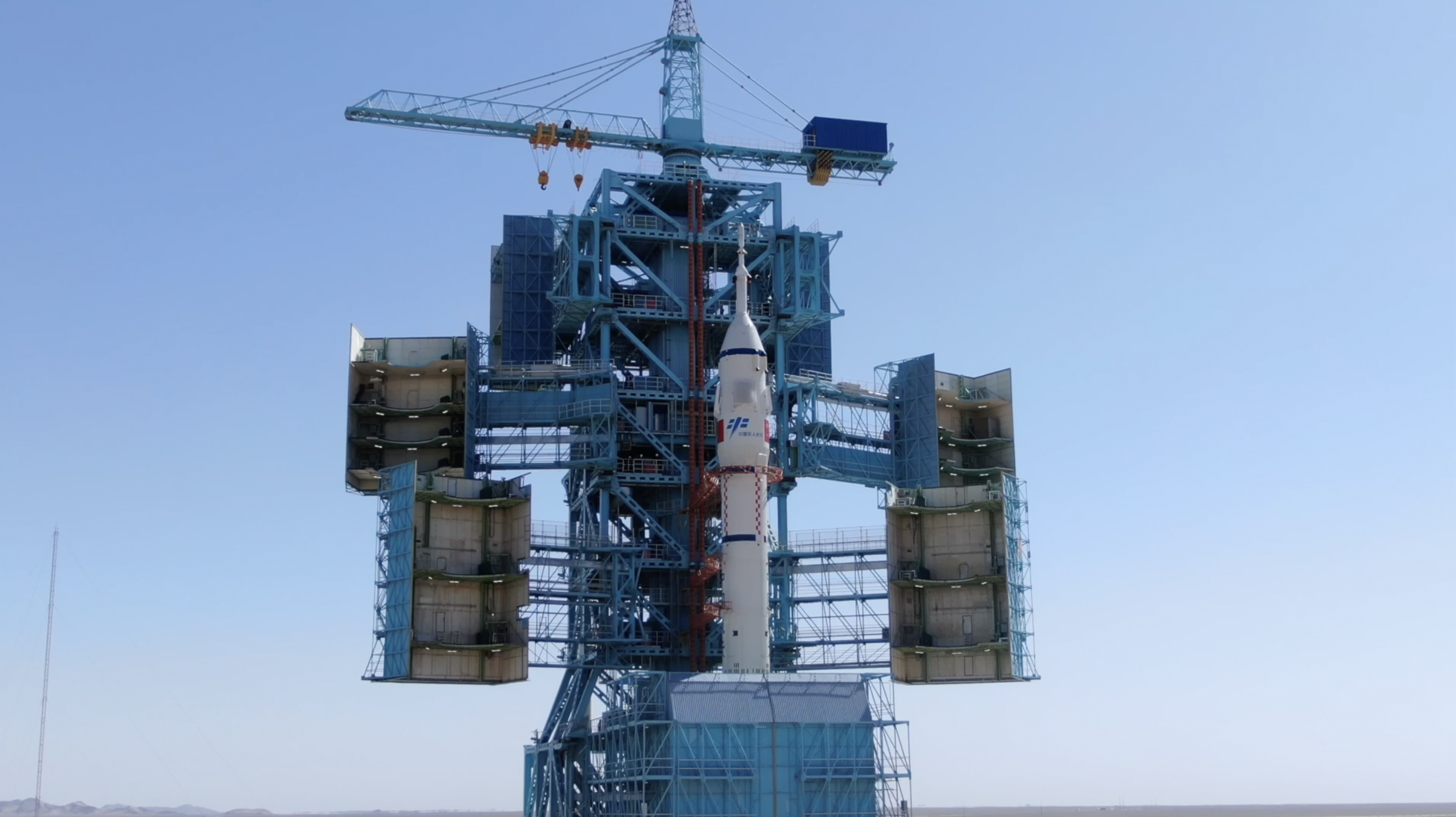
Watch: Carrier rocket of Shenzhou-14 moved to launch pad
China started its manned space program back in 1992. The Long March-2F rocket made its debut on November 20, 1999 with the Shenzhou-1 spacecraft. In 2003, China sent astronaut Yang Liwei into space and he returned safely with the Shenzhou-5 spaceship, China's first ever manned space mission.
With a total length of 58.4 meters and a diameter of 3.35 meters, the Long March-2F rocket is packed with four boosters and has a takeoff weight of about 480 tonnes. It can carry the eight-tonne Shenzhou spacecraft into low-Earth orbit, where China's space station operates.
So far, the Long March-2F carrier rockets have successfully launched 13 Shenzhou spacecrafts, carrying 13 astronauts into space.
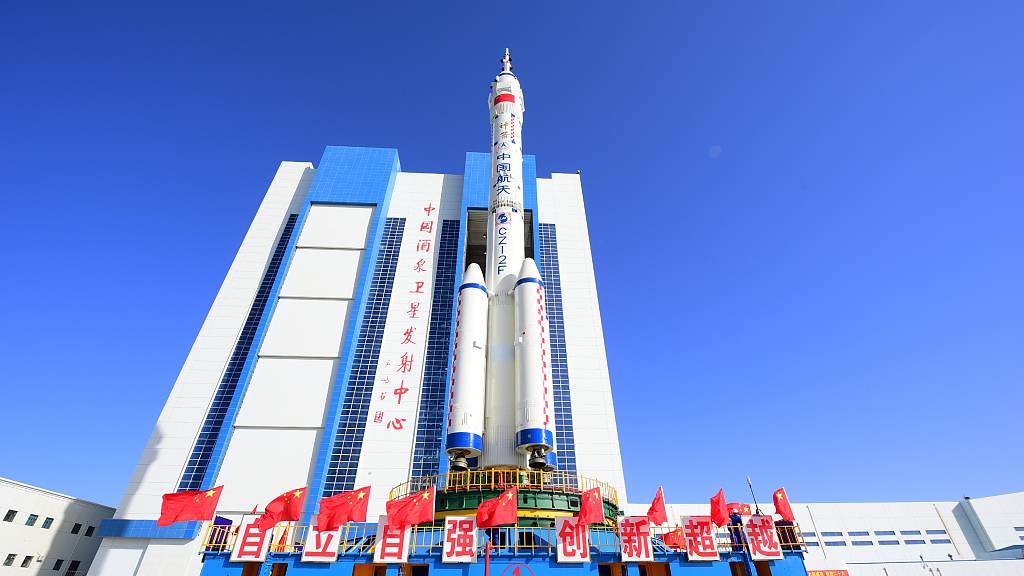
China's crewed spaceship Shenzhou-14 atop a Long March-2F carrier rocket is transferred to the launchpad at the Jiuquan Satellite Launch Center in northwest China, May 29, 2022. /CMSEO
China's crewed spaceship Shenzhou-14 atop a Long March-2F carrier rocket is transferred to the launchpad at the Jiuquan Satellite Launch Center in northwest China, May 29, 2022. /CMSEO
China Space Station Mission 2022
A total of six space flight missions will be carried out in 2022 to complete the construction of China's space station, forming a T-shaped complex in coming October.
After the launch of the Tianzhou-4 cargo spaceship in May and the launch of the Shenzhou-14 manned spacecraft in June, the Wentian lab module will dock with the Tianhe core module in July and the Mengtian lab module in October. The Tianzhou-5 cargo spacecraft and the Shenzhou-15 manned spacecraft will then follow, taking another three astronauts to stay in orbit for six months.
In addition, China also plans to launch its first large Chinese Space Station Telescope (CSST), or Xuntian, meaning "survey to heavens," in 2023.
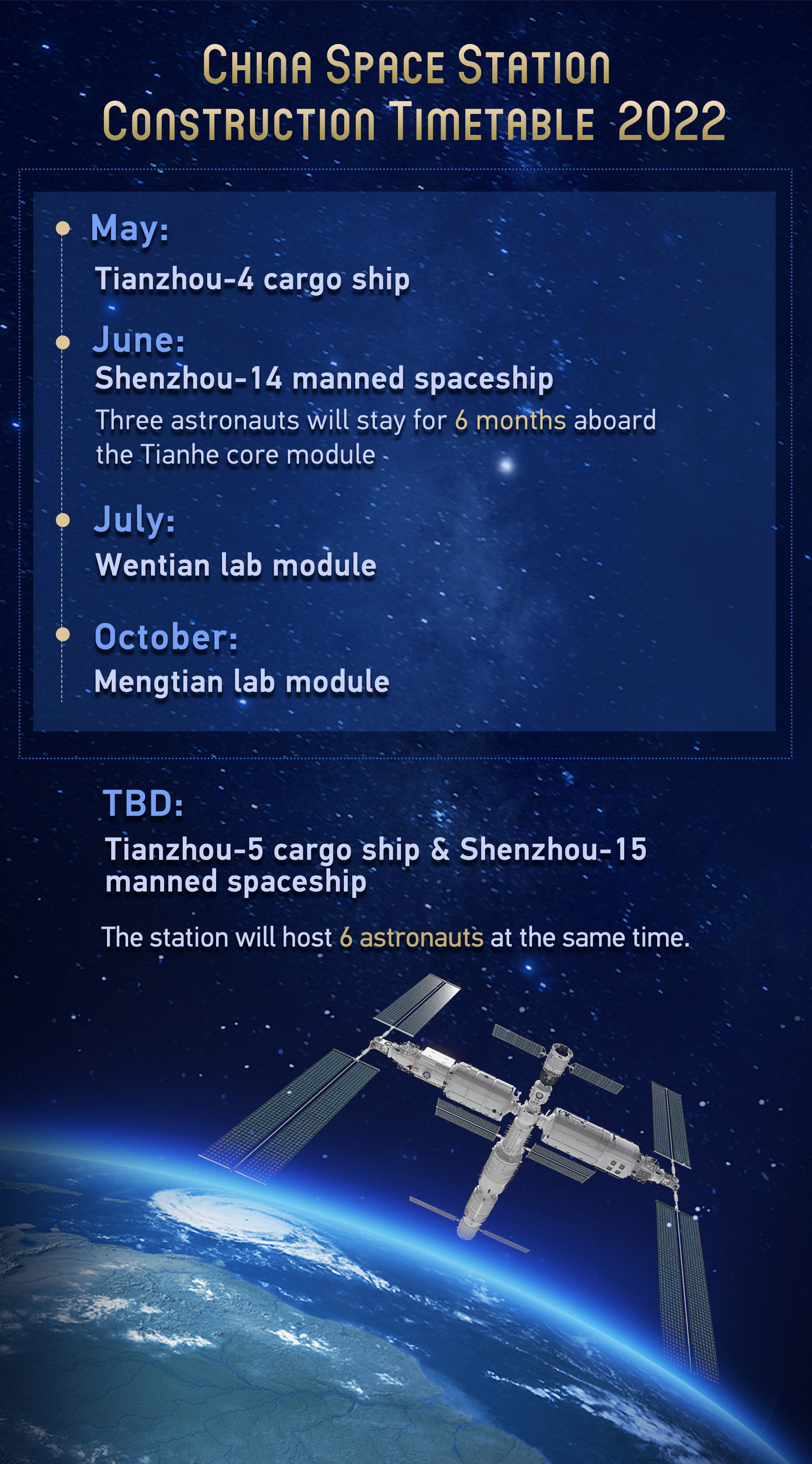
China Space Station construction timetable 2022. /CGTN graphic by Du Chenxin
China Space Station construction timetable 2022. /CGTN graphic by Du Chenxin

